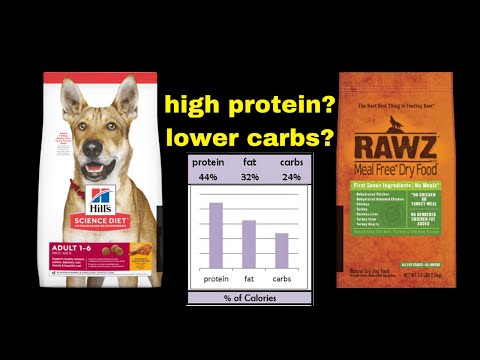
Many pet owners may not realize that specific health conditions in their furry companions require tailored nutrition. Veterinarians often suggest diets with adjusted nutrient profiles for animals dealing with kidney disease, liver issues, or metabolic disorders. These specialized formulas prioritize quality over quantity, ensuring pets receive essential nutrients without unnecessary strain on their bodies.
Protein plays a critical role in maintaining energy levels and muscle health for active canines. However, some situations call for careful moderation. The Association of American Feed Control Officials (AAFCO) establishes minimum protein requirements, which guide manufacturers in creating balanced meals. Prescription options and commercial varieties both exist, depending on a pet’s unique medical needs.
For example, research shows that reducing certain nutrients can significantly improve quality of life for animals with chronic conditions. These diets often contain high-quality ingredients that support organ function while meeting energy demands. Always consult a veterinary professional before making dietary changes to ensure proper alignment with health goals.
Key Takeaways
- Specialized diets help manage kidney disease and other health issues in pets
- Protein remains vital for energy but requires adjustment in specific cases
- AAFCO guidelines ensure nutritional adequacy in commercial pet foods
- Prescription and over-the-counter options cater to different medical needs
- Veterinary consultation is essential before altering a pet’s nutrition plan
Understanding low protein dog food
Navigating canine nutrition requires understanding specific dietary benchmarks. The Association of American Feed Control Officials (AAFCO) sets standards for commercial pet meals, using dry matter basis measurements to account for moisture variations. This method removes water content, providing accurate comparisons between products.
Defining Protein Levels and AAFCO Guidelines
Standard adult formulas typically contain at least 18% protein by dry weight. Prescription options often drop to 13-15%, catering to animals needing reduced nutrient loads. These adjustments help manage metabolic stress while maintaining energy balance.
Over-the-Counter vs. Prescription Formulas
Commercial varieties meet basic requirements, while veterinary-prescribed solutions offer precise nutritional profiles. Consider these key differences:
| Feature | OTC Formulas | Prescription Options |
|---|---|---|
| Protein Content | 18-22% | 13-15% |
| Availability | Retail Stores | Veterinary Clinics |
| Cost | $2-3/lb | $4-6/lb |
Veterinarians may suggest specialized meals for animals with reduced filtration capacity or specific metabolic challenges. Always verify product labels and consult professionals before switching formulas. Proper nutritional targeting helps maintain vitality without overtaxing biological systems.
When Dogs Need a Low-Protein Diet
Certain medical situations require careful nutritional adjustments to support animal health. Reduced nutrient formulas often become necessary when organs struggle to process waste effectively. Veterinarians typically recommend these modifications after diagnosing specific conditions affecting filtration or metabolism.
Health Conditions: Kidney and Liver Issues
Organs like kidneys and livers work harder when processing excess nutrients. For canines with reduced filtration capacity, limiting specific compounds helps prevent toxin buildup. Studies indicate that tailored nutrition plans decrease disease progression rates by 30-40% in chronic cases.
Liver disorders also benefit from controlled nutrient intake. Metabolic byproducts from certain amino acids can worsen hepatic stress. Veterinary nutritionists emphasize balancing essential nutrients while minimizing strain on compromised systems.
Age, Activity, and Special Requirements
Senior pets often require adjusted meals due to natural organ function decline. However, growing puppies and energetic adults usually need higher nutrient density. The American College of Veterinary Internal Medicine advises against restrictive diets for developing animals without medical justification.
Consider these factors when evaluating dietary needs:
- Bloodwork results indicating organ function levels
- Energy expenditure from daily exercise routines
- Existing medical history affecting nutrient processing
Customized care plans ensure each animal receives appropriate support. Regular veterinary checkups help monitor condition changes that might require nutritional adjustments.
How to Choose the Best Low Protein Dog Food

Selecting appropriate nutrition for pets with specific needs requires careful evaluation of quality and compatibility. Formulas designed for medical support must balance essential nutrients while minimizing strain on sensitive systems. Focus on these critical factors to make informed decisions.
Nutritional Balance and Ingredient Priorities
High-quality meals prioritize digestible proteins like chicken or eggs, which provide amino acids without excessive waste production. Check labels for AAFCO compliance statements to ensure minimum nutritional standards. Trusted brands like Hill’s Prescription Diet use precision-formulated ingredients to support organ health while maintaining energy levels.
Compare these elements when reviewing options:
- Protein sources listed in the first three ingredients
- Guaranteed analysis percentages matching veterinary recommendations
- Absence of artificial additives or fillers
Consulting Your Veterinarian for Personalized Advice
“Every animal’s requirements differ based on bloodwork and condition severity,” notes Dr. Emily Carter, a board-certified veterinary nutritionist. Regular consultations help tailor meal plans to individual health metrics like kidney values or liver enzyme levels. Prescription formulas from Purina Pro Plan Veterinary Diets often require professional approval to address specific metabolic challenges.
Follow this three-step process for optimal results:
- Schedule diagnostic testing to identify nutritional needs
- Review commercial and prescription options with your veterinarian
- Monitor weight and energy levels during dietary transitions
Cross-reference expert blogs and peer-reviewed studies to stay updated on evolving nutritional science. Combining professional guidance with informed research ensures pets receive targeted support for their unique circumstances.
Transitioning Your Dog to a Low-Protein Diet
Adjusting a pet’s meals requires patience and strategic planning to avoid digestive upset. Sudden dietary shifts can trigger gastrointestinal issues or resistance to new flavors. A gradual approach helps animals adapt while allowing owners to observe behavior patterns and energy changes.
Step-by-Step Transition Tips
Start by mixing 25% new formula with 75% current meals for 2-3 days. Increase the ratio every 48 hours until reaching 100% new food over 7-10 days. This method minimizes stomach discomfort and encourages acceptance of novel textures.
| Transition Day | New Food % | Old Food % | Key Monitoring Focus |
|---|---|---|---|
| 1-3 | 25% | 75% | Appetite & stool consistency |
| 4-6 | 50% | 50% | Energy during playtime |
| 7-10 | 100% | 0% | Overall behavior changes |
Monitoring Health and Behavior
Track these three metrics daily during adjustments:
- Meal consumption enthusiasm
- Consistency of waste elimination
- Engagement in physical activities
Increased fat content in modified formulas helps maintain calorie intake. Look for omega-rich sources like salmon oil to support skin health. “Always pair dietary changes with hydration checks,” advises Dr. Lisa Harper from the Animal Nutrition Institute.
Create a simple log to record observations. Note any reluctance toward meals or unusual lethargy – these issues may signal needed adjustments. Consult a veterinarian if challenges persist beyond the transition period.
Recipes and Nutritional Strategies for Low-Protein Diets
Creating satisfying meals for canines with dietary restrictions requires both creativity and nutritional knowledge. By focusing on digestible ingredients and taste-enhancing techniques, pet owners can ensure their companions enjoy mealtime while adhering to health guidelines.
Exploring Flavorful and Digestible Options
Rice serves as a cornerstone ingredient in many veterinary-approved meals. Its gentle fiber content supports digestion, while providing steady energy. Cooked white rice pairs well with lean proteins like turkey or eggs, creating balanced recipes for protein-conscious companions.
Herbs like parsley or basil add natural flavor without overwhelming sensitive systems. Bone broth (low-sodium) can enhance aroma and appeal. “Texture variety keeps meals interesting,” explains Dr. Sarah Miller, a certified veterinary chef. “Mix soft and crunchy elements to stimulate appetite.”
Consider these vet-reviewed combinations:
- Quinoa with steamed carrots and shredded chicken breast
- Mashed sweet potato blended with ground beef and spinach
- Oatmeal topped with blueberries and cottage cheese
Rotate approved vegetables weekly to maintain excitement. Pumpkin supports gut health, while green beans add satisfying crunch. Always consult a veterinary nutritionist before introducing new ingredients to ensure alignment with specific needs.
Conclusion
Tailoring a pet’s diet requires collaboration between owners and veterinary experts to achieve optimal health outcomes. Specialized nutrition plans support organ function while maintaining energy levels, particularly for animals with chronic conditions. Key considerations include ingredient quality, nutrient ratios, and regular health assessments to ensure dietary effectiveness.
Fiber-rich ingredients and digestible carbohydrates play vital roles in promoting gut health and stable digestion. These components, combined with essential vitamins, help sustain an active life for pets managing medical needs. Always prioritize formulas that balance taste and nutritional precision.
This guide serves as a roadmap for implementing targeted meal plans safely. Consistent veterinary checkups and behavior tracking remain critical for adapting strategies over time. By focusing on individualized care and scientific guidelines, owners can address health concerns while enhancing their companion’s quality of life.
Remember: Nutritional adjustments should always align with professional advice. Small, informed changes create lasting benefits for pets needing tailored support.



